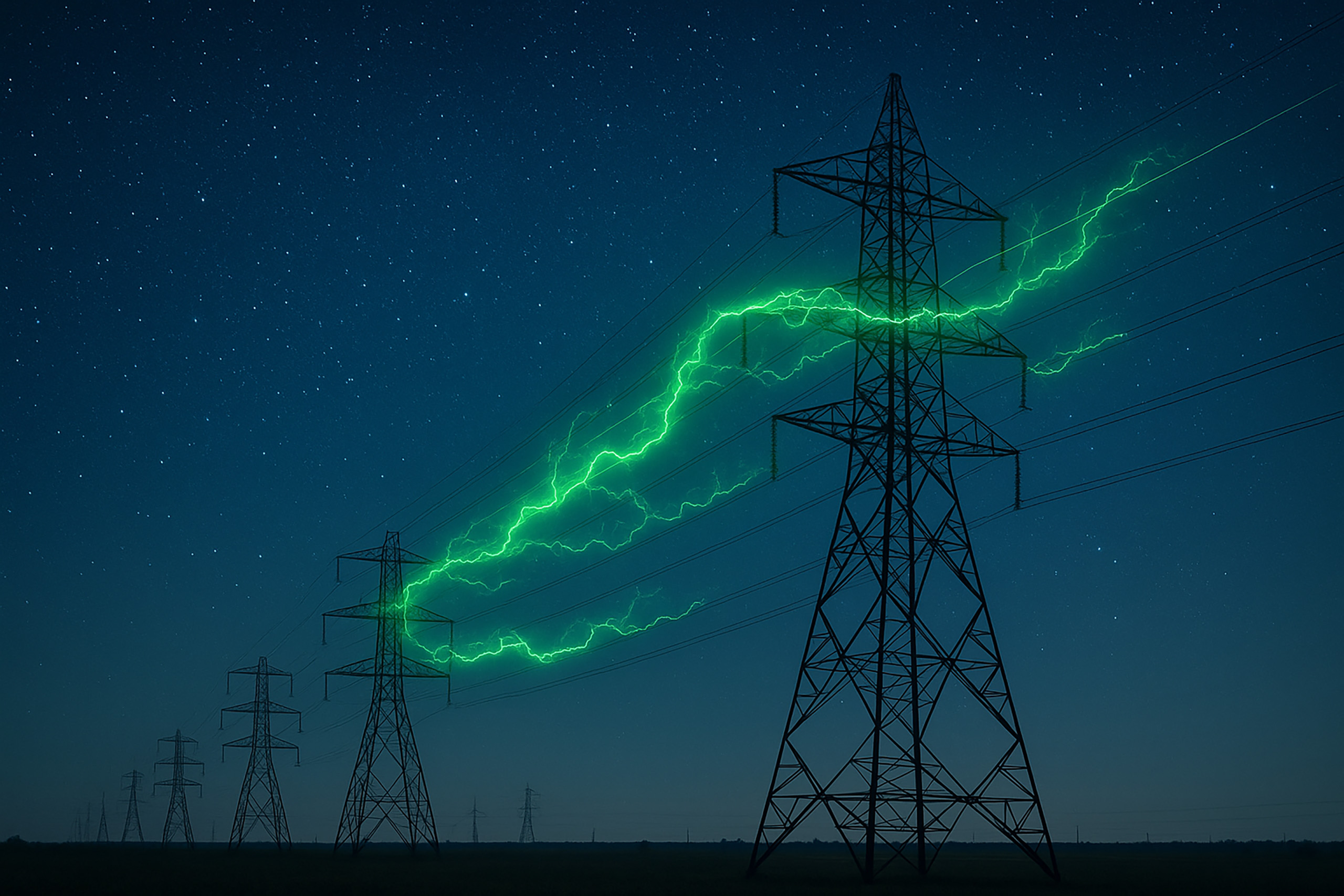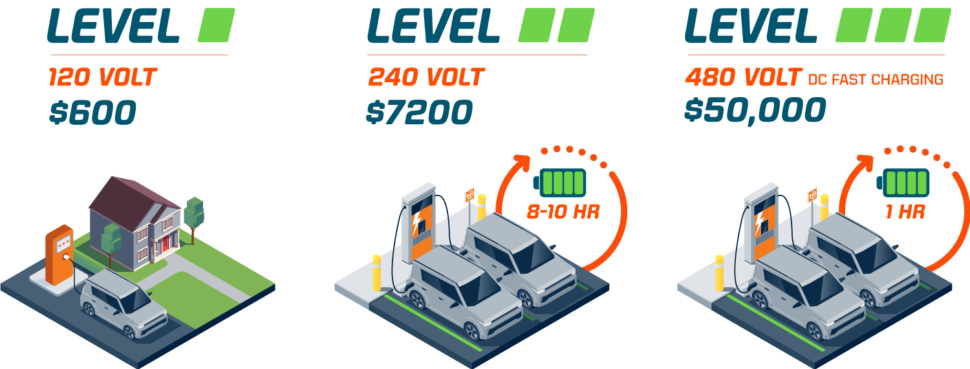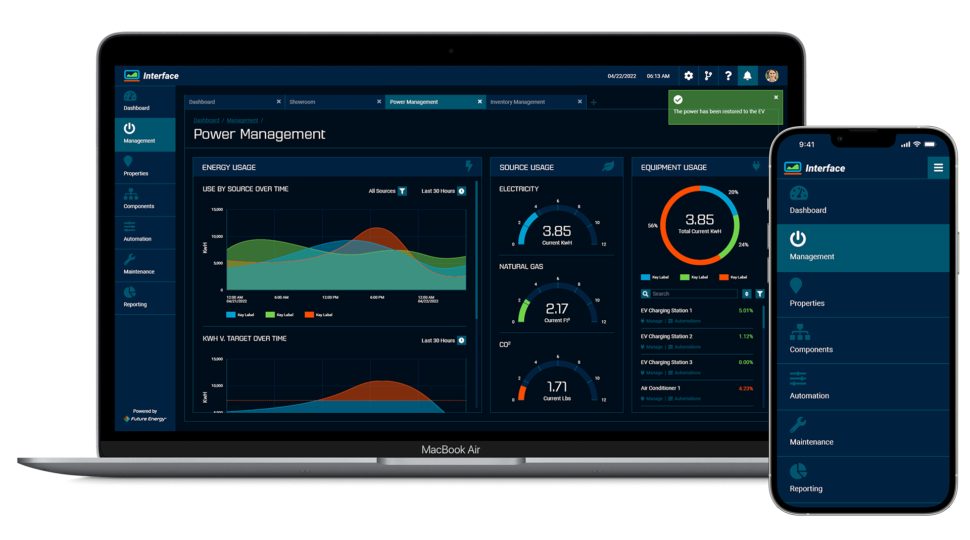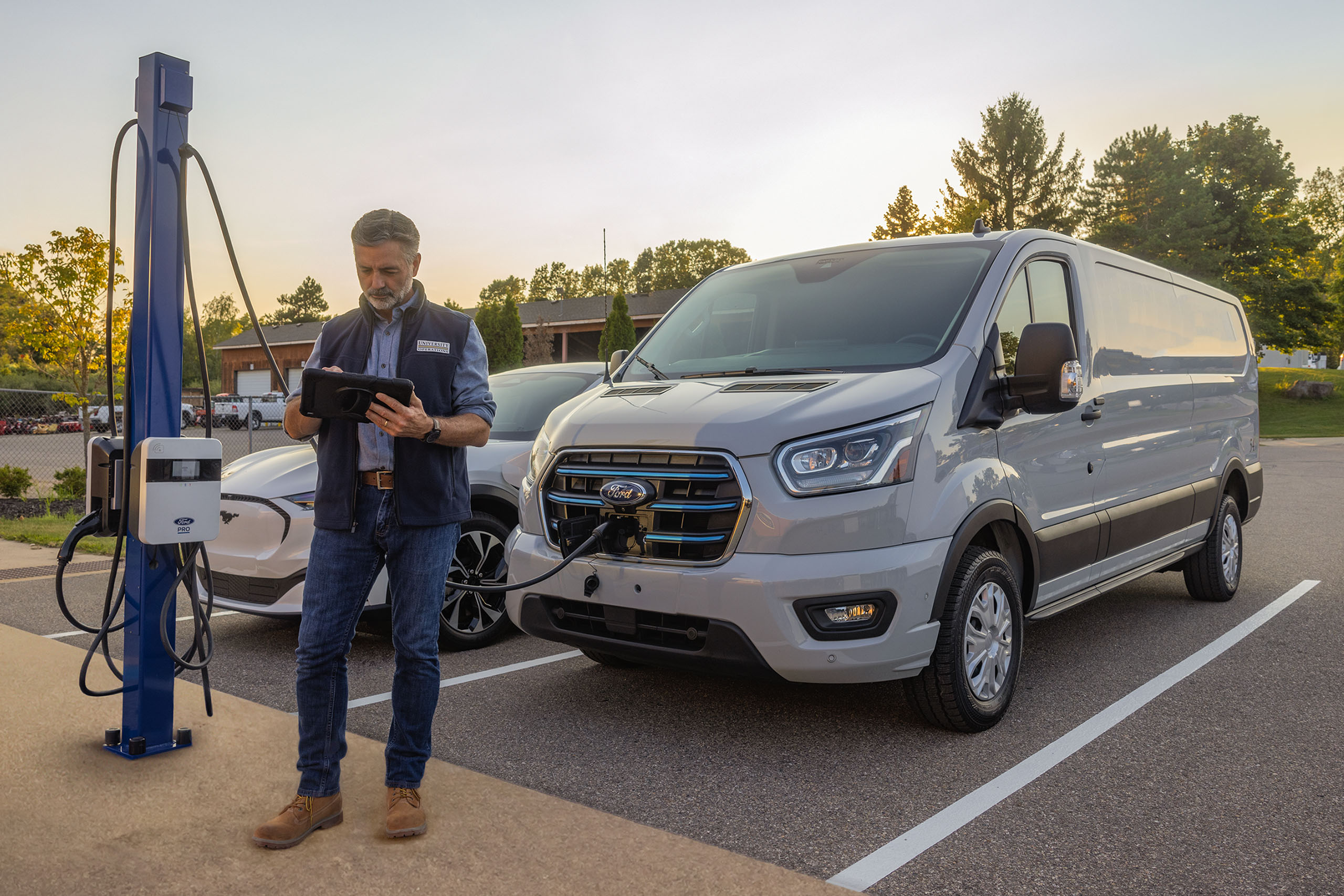

Drivers of electric vehicles (EVs) in the US will soon have access to a nationwide network of EV charging stations, a move that is part of an increasingly clear message from the Biden administration. In February 2023, the federal government released final rules about the distribution of $7.5 billion of federal funds for EV charging as part of the Infrastructure Investment and Jobs Act.
Unmistakably, the commitment to electrification is solidifying across government, corporate, and consumer sectors. Many original equipment manufacturers have developed sustainability strategies. The state of California even set 2035 as the year by which EVs must constitute all new vehicle sales.
Yet many businesses continue to wonder if EV charging is worth the investment.
What does this investment mean in terms of cost, power needs, and a road map for the future?
The answers for your business begin by identifying your unique use case and understanding how EV charging complements your business objectives.
What Are the Different EV Charger Levels?
There are three primary types of EV chargers: level 1, level 2, and level 3. The difference among the levels has to do with the amount of electricity that the charger delivers to the battery of the electric vehicle. Higher levels mean greater power and faster charge.
Each EV has its own onboard charger capacity and automatically communicates with the charger to maximize the amount of charge it can accept. In other words, it’s not possible to “overcharge” an EV.

Level 1 EV Charging
Level 1 EV chargers work off 120-volt power, which is the standard power for a house. All electric vehicles come with a cord that the driver can use to plug the car into a standard outlet.
Level 1 power tops out around 2.4 kilowatts (kW) and provides about five miles of range for each hour of charging. As a result, level 1 chargers are most appropriate for home use. The EV can remain plugged in overnight and receive about 40 miles of range, enough for the commute or daily activity of most drivers.
Level 2 EV Charging
Level 2 charger stations require a 240-volt power source, typically used for larger appliances such as air conditioners and clothes dryers. Level 2 chargers operate up to 19.2 kW and generally charge an EV at about 40 miles per hour.
EV drivers might install a level 2 charger on a dedicated 240-volt circuit in the garage. This is also the level that businesses commonly install for employees or customers. In the US, more than 80% of publicly available EV chargers are level 2.
Level 3 EV Charging
A level 3 charger is also known as a direct-current fast charger (DCFC), because DCFCs feed direct current directly into an EV’s battery. A level 3 charging station runs on 480- or 1000-volt power, and many operate at 400 kW. The conversion of alternating current from the grid to direct current for the EV battery takes place within the charger.
As a result, level 3 chargers are the fastest chargers available. A level 3 DC fast charger can fully charge an EV in about a half hour.
Which Level of EV Charging Does My Business Need?
Whether your business needs level 2 or level 3 chargers is not a simple question. Decisions about EV charger installation depend above all on your business’s unique use case.
Determining Your Power Needs
The number one factor is the availability of the appropriate electrical infrastructure.
The 480-volt three-phase power required for level 3 charging generally exists in industrial and commercial systems.
The utility company typically considers businesses such as automotive dealerships, shopping malls, and office buildings to be small-time power users. The existing infrastructure would only support level 2 charging. If level 3 EV chargers fit your use case, an infrastructure upgrade to 480-volt three-phase power has to be part of the plan.
Understanding Time Requirements for EV Charging
Even if your company has the proper infrastructure for level 3 chargers, DC fast charging may not fit your use case. For example, if your EV fleet will be stationary overnight, level 2 charging solutions may be sufficient.
Future Energy recommends a full analysis of who you expect to use your EV chargers that gauges how long they will be charging their vehicles and the risk if they leave your establishment without a full charge.
Considering the Cost of EV Charging Solutions
“How much does an EV charger cost?” That’s one of the first questions we hear at Future Energy. The answer is more complicated than considering just the equipment’s price tag though.
The cost of a level 3 charger ranges from $40,000 to $175,000 per unit, as they vary widely by capability.
In many cases, your company can recoup much of your investment for the cost of EV chargers and infrastructure upgrades. There are funds available at the federal, state, and local levels in the form of tax credits, grants, rebates, and reductions in utility rates. Future Energy’s Financial Incentive National Database tool helps us uncover 99% of all available money to offset our clients’ costs related to their EV charger strategy.

What Does My Company Need to Do Now about EV Charging?
Just like a printer or industrial machinery, EV chargers will require upgrades at some point. That’s why Future Energy favors a phased approach to EV charging: plan for now while thinking about the future.
What Are Your Immediate Needs?
Current consumer EV charging demands may influence a company’s decision between level 2 and level 3 chargers. For example, hybrid vehicles (HEVs), which are powered by both a battery and internal combustion engine, are achieving record sales numbers in the US. Because they don’t rely exclusively on electricity, HEVs take less time to charge fully. Depending on your business use case, that could favor investment in level 2 chargers for the short term.
What Is Your Long-Term Strategy?
Future Energy works to help educate businesses on what a long-term EV charging investment would look like. The plan is more complex than a simple equipment installation or infrastructure project. Instead, the decision between level 2 and level 3 chargers will affect electrical power needs, electricity consumption, and a subsequent correlation to the utility bill.
What Does the Future Hold for EV Charging?
Future Energy focuses on the future, then works backward to your current needs. Level 2 EV chargers may be fine for now. But what could we see in 2035?
- Fully electrified fleets
- Employee expectations that they can charge at work
- Customers choosing locations that offer EV chargers
That’s why it’s critical to plan now for potential infrastructure needs in 10 years.
Who Can Help Answer My Questions about EV Charging Solutions?
Plan for the future of electrification by integrating level 2 and level 3 EV chargers into your road map. Contact Future Energy today for expert EV charging consulting for your business.



